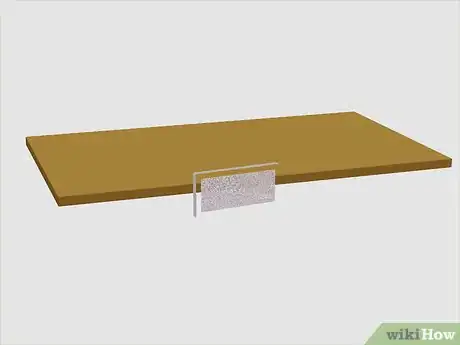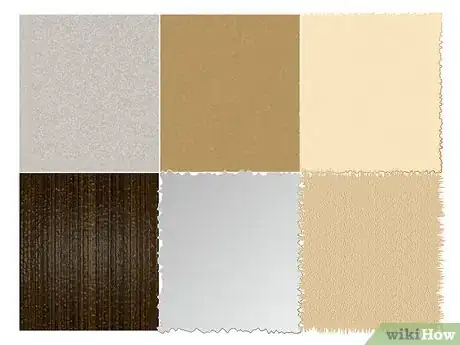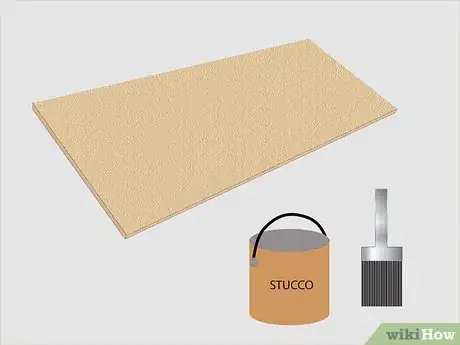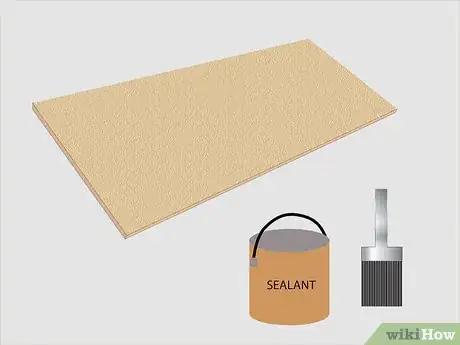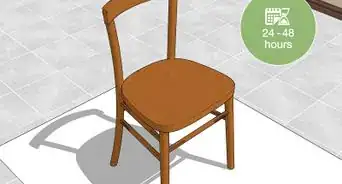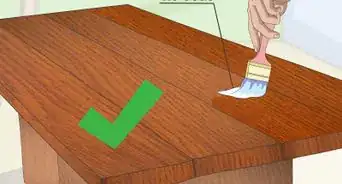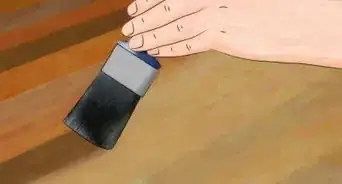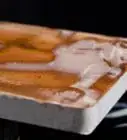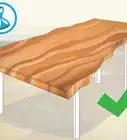wikiHow is a “wiki,” similar to Wikipedia, which means that many of our articles are co-written by multiple authors. To create this article, 17 people, some anonymous, worked to edit and improve it over time.
This article has been viewed 235,724 times.
Learn more...
Medium density fiberboard or MDF is an inexpensive product that is composed of wood fiber that is subjected to pressure and heat as a means of creating sections of wood that can be used in a number of building projects, such as building lightweight shelving, tables and even kitchen cabinets. MDF can be finished in any number of ways to help the pieces work well in a variety of settings. Best of all, the task of finishing the wood product can be accomplished with relatively little time or effort.
Steps
-
1Prepare the MDF for finishing. This is accomplished by sanding the surface to make sure it is perfectly smooth. Use clean cloths to remove any type of residue left on the surface after the product has been sanded or handled as part of the construction of the counter, cabinet or table. The idea is to remove any dust or other residue that would cause a bubbling or crackling appearance to the finish once it is applied.[1]
-
2Determine the type of finish desired. Typically, this involves considering what type of finish will allow the piece to blend into the room where it will be positioned. In some instances, painting will make it possible to pick up 1 or more of the colors in the space and incorporate the piece into the room with greater ease. For rooms with a lot of exposed and varnished wood, the application of a wood stain to the MDF may be a better option.[2]Advertisement
-
3Initiate the finishing process. If painting, apply a coat of primer to the surface of the MDF, as this will help the paint to adhere. Once the primer is dry, begin the painting. For staining, dip a clean cloth into the stain and wipe it over the surface of the MDF, taking care to follow the pattern of the compressed wood product. In both cases, make sure the top coat is even and the appearance is uniform.[3]
-
4Apply the sealant. Once the stain or paint has dried, use a clear sealant or lacquer to protect the appearance of the finished MDF. Doing so will help inhibit scratching that would damage the look of the piece. Make sure the sealant is applied evenly across the surface and allow it to dry before moving the piece into position.[4]
Community Q&A
-
QuestionIf I use MDF as a substitute for real wood, what kind of paint should I use?
 Community AnswerMDF has excellent and uniform structural properties, but does not have the natural, beautiful wood grain appearance and texture of natural wood. The face of MDF is smooth and dense, and is easy to coat with paint or stain, while the factory edges (or any cut edges) are more porous and will soak up a lot of paint or stain. You can use a variety of paints or stains; the trick is to seal the MDF first, then build up layers of paint or stain. Both paint and stain can be finished with a gloss coat to make the MDF look like high-end wood. I stained an MDF tabletop with dark stain to simulate wood grain, then flood-coated it with tabletop epoxy.
Community AnswerMDF has excellent and uniform structural properties, but does not have the natural, beautiful wood grain appearance and texture of natural wood. The face of MDF is smooth and dense, and is easy to coat with paint or stain, while the factory edges (or any cut edges) are more porous and will soak up a lot of paint or stain. You can use a variety of paints or stains; the trick is to seal the MDF first, then build up layers of paint or stain. Both paint and stain can be finished with a gloss coat to make the MDF look like high-end wood. I stained an MDF tabletop with dark stain to simulate wood grain, then flood-coated it with tabletop epoxy. -
QuestionMy Ashford Kiwi spinning wheel needs to be finished and I have no idea what to use to do this! What can I do?
 Community AnswerYou can stain it or paint it, but you want to be careful not to use a finish that will wear off on the thread. If you're not familiar with primer and paint techniques, a stain would be an easy way to seal the wheel and make it look beautiful. The tricky part will be getting stain into the triangular cut outs. The inside edges will soak up a lot of stain, so they will be darker, and it will be tricky getting the stain into the cut outs. The two outer faces will be easy to stain, and the thread groove will be easy to access, but will soak up a lot of stain. A hard gloss coat will seal the stain and give the thread groove a low friction finish.
Community AnswerYou can stain it or paint it, but you want to be careful not to use a finish that will wear off on the thread. If you're not familiar with primer and paint techniques, a stain would be an easy way to seal the wheel and make it look beautiful. The tricky part will be getting stain into the triangular cut outs. The inside edges will soak up a lot of stain, so they will be darker, and it will be tricky getting the stain into the cut outs. The two outer faces will be easy to stain, and the thread groove will be easy to access, but will soak up a lot of stain. A hard gloss coat will seal the stain and give the thread groove a low friction finish. -
QuestionStain or paint an MDF thread?
 Community AnswerStain soaks in much more; it's meant to be porous, so stain is better. Paint sticks.
Community AnswerStain soaks in much more; it's meant to be porous, so stain is better. Paint sticks.
Things You'll Need
- Sandpaper
- Primer and Paint
- Paint Brushes
- Stain
- Clean Cloths
- Sealant or Lacquer
References
- ↑ https://www.familyhandyman.com/woodworking/woodworking-tips/what-is-mdf-plus-tips-for-using-mdf/
- ↑ https://www.bobvila.com/articles/paint-that-looks-like-wood/
- ↑ https://www.finewoodworking.com/2006/06/06/tips-for-painting-mdf
- ↑ https://www.bobvila.com/articles/how-to-paint-mdf/
- http://www.woodweb.com/knowledge_base/Finishing_MDF.html
